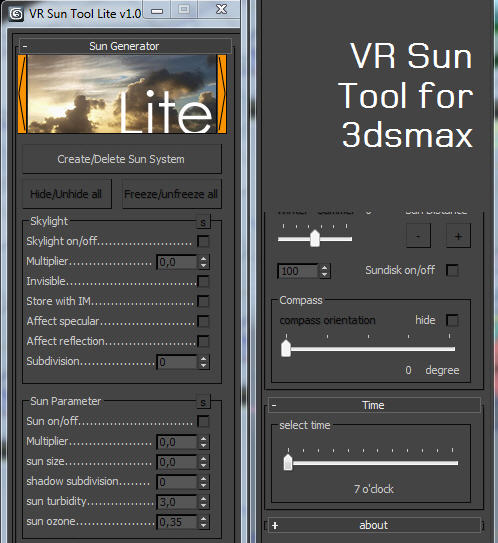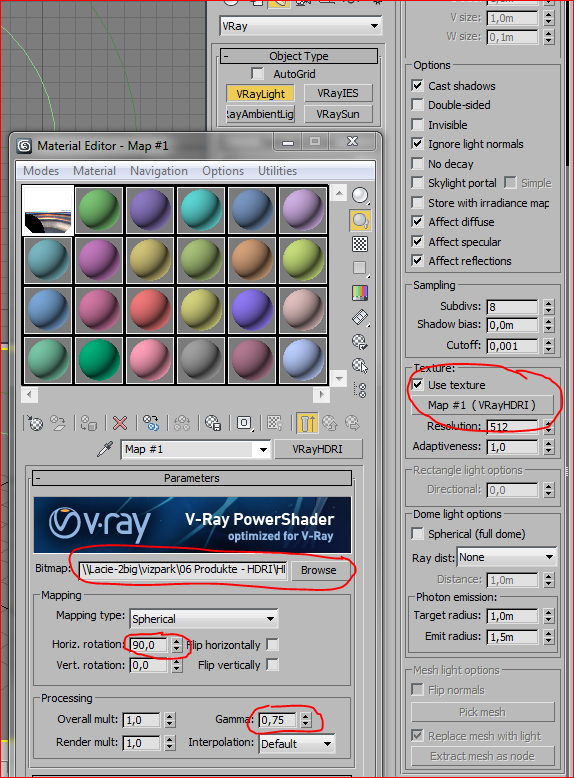
Another option here is to use Exposure Control in 3DS Max’s Environment & Effects panel (press 8 on keyboard.)
#Decrease light in 3d max 2015 vray series
I find 8 EV is a good guess on where to start but rarely ever create a series of final renderings without bumping it one way or another. This is where I start from but you should be ready to adjust this based on the types of shots you’re setting up.Įxposure 8.0: Be prepared to tweak this with every new scene. This helps control how “blurry” things get when you zoom in. In the digital world, we can just back the camera up as far as we need to.Īperature 13.0: This will control overall scene brightness but, for our purposes here, will help create a deep field of view. In the real world, this effect is often achieved by using a tilt-shift lens. Narrower focal lengths can achieve the same effect but require tilt-corrections which can be a pain.

Here’s a brief explanation of why I like these settings.įocal Length 62mm: This helps to get away from the fish-eye lens end of the focal spectrum and produces those nice, straight, parallel vertical and horizontal edges one loves to see in Architectural Photography. Personally, I tend to use the 3DS Max Physical Camera with the settings shown here. What’s a studio without a camera, right? Create whatever kind of camera you want and use whatever settings you want. Step 1: Create the BackdropĪdd a camera to your scene and adjust the settings to your preference. You’ll have to tweak your settings initially but once you get the look you’re after you can reuse it over and over again! Let’s break the process down into a series of easy-to-follow steps. All it takes to build a solid studio setup in 3DS Max is a plane object, a camera, and a handful of lights. The basic idea is to create some degree of global lighting and then compliment it with additional fill lights. There are many different ways to go about this so try not to focus on specific approaches and more on end-result. For example, do you move a light or rotate an object to soften shadows? Sometimes it’s not always an easy choice. It’s important to keep in mind the positional relationship between your object and lights.

This is what you’re pointing the camera at (in most cases), the relative point from where you’ll be gauging the balance of your lights, and what your clients are going to be looking at. This is what we’re rendering-our 3D model. For example, a green backdrop (green screen) is often used on Hollywood sets to allow digital backdrop replacement later in production lines. This helps “collect” your scene light and plays an integral role in defining the overall feel of your scene. The backdrop is the “background” you see in the image. Backlights are especially popular in portrait photography but not always required in product photography. Backlights are used to help separate the object of your scene from the background and highlight its edges. Backlightīacklights can also be referred to as “rim” or “hair” lights depending on the context in which they’re being used. In 3D studio setups, an equivalent effect can be achieved simply by scaling up your light’s size. In real-world studio setups, these lights are diffused to prevent creating harsh shadows of their own. Fill Light(s)įill lights help create a more balanced appearance by softening the shadows created by main lights. In cases where natural lighting is present, such as sunlight, one could arguably consider that light as a second main light as well. The main light is, as its name implies, the primary source of light in your studio setup. Here’s a list of parts of studio lighting we’re going to discuss a brief word on the role they’ll play in our scene. We’ll be mimicking a basic 3-point lighting setup with a little bit of corner-cutting since we’re not working in the real world. That’s all we’re focusing on here-the basics. Of all the many combinations one could find, there are some aspects of studio lighting design that are pretty universal.

#Decrease light in 3d max 2015 vray software
Many of the same concepts of real-world studio lighting translate to 3D software as well.


 0 kommentar(er)
0 kommentar(er)
